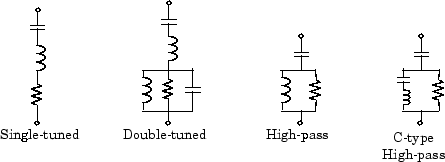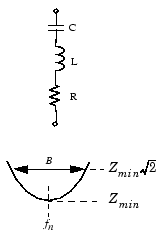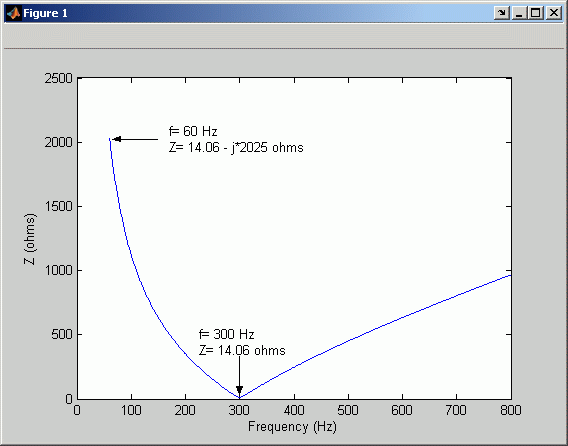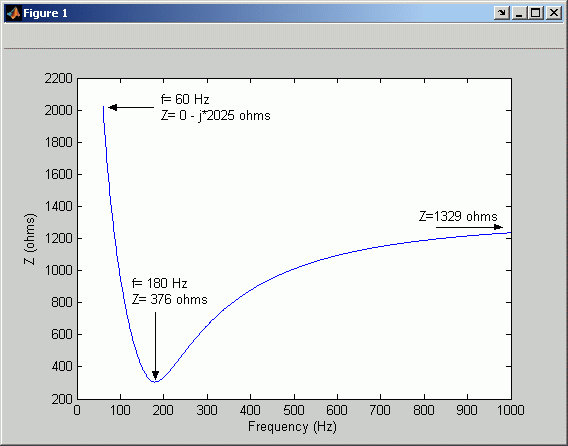Three-Phase Harmonic Filter
(To be removed) Implement four types of three-phase harmonic filters using RLC components
The Specialized Power Systems library will be removed in R2026a. Use the Simscape™ Electrical™ blocks and functions instead. For more information on updating your models, see Upgrade Specialized Power System Models to use Simscape Electrical Blocks.
Libraries:
Simscape /
Electrical /
Specialized Power Systems /
Passives
Description
The Three-Phase Harmonic Filter block models three-phase harmonic filters, which are shunt elements that are used in power systems for decreasing voltage distortion and for power factor correction. Nonlinear elements, such as power electronic converters, generate harmonic currents or harmonic voltages, which are injected into the power system. The resulting distorted currents flowing through the system impedance produce harmonic voltage distortion. Harmonic filters reduce distortion by diverting harmonic currents in low-impedance paths. Harmonic filters are capacitive at the fundamental frequency, so they are also used to produce the reactive power required by converters and for power factor correction.
To achieve an acceptable distortion, several banks of filters of different types are connected in parallel. The most commonly used filter types are:
Band-pass filters, which are used to filter the lowest order harmonics, such as 5th, 7th, 11th, and 13th order harmonics. Band-pass filters can be tuned at a single frequency (single-tuned filter) or at two frequencies (double-tuned filter).
High-pass filters, which are used to filter high-order harmonics and cover a wide range of frequencies. A special type of high-pass filter, the C-type high-pass filter, is used to provide reactive power and avoid parallel resonances. It also allows filtering of the low-order harmonics (such as 3rd), while keeping zero losses at the fundamental frequency.
The Three-Phase Harmonic Filter block is built of RLC elements. The resistance, inductance, and capacitance values are determined from the filter type and the:
Reactive power at nominal voltage
Tuning frequencies
Quality factor. The quality factor is a measure of the sharpness of the tuning frequency. It is determined by the resistance value.
The four types of filters that can be modeled with the Three-Phase Harmonic Filter block are shown below:

The simplest filter type is the single-tuned filter. The following figure gives the definition of the quality factor Q and formulae for computing the reactive power QC and losses (active power P). The quality factor Q of the filter is the quality factor of the reactance at the tuning frequency Q = (nXL)/R. The quality factor determines the bandwidth B, which is a measure of the sharpness of the tuning frequency.

| Tuned harmonic order | n = fn/f1 = |
| Quality factor | Q = nXL/R = XC/(nR) |
| Bandwidth | B = fn/Q |
Reactive power at f1 | QC = (V2/XC)·n2/(n2 – 1) |
Active power at f1(losses) | P ≈ (QC/Q)·n/(n2 – 1) |
where:
f1 = fundamental frequency
ω = 2πf1 = angular frequency
fn = tuning frequency
n = harmonic order = (fn/f1)
V = nominal line-line voltage
XL = inductor reactance at fundamental frequency = Lω
XC = capacitor reactance at fundamental frequency = 1/(Cω)
The double-tuned filter performs the same function as two single-tuned filters, although it has certain advantages: its losses are much lower and the impedance magnitude at the frequency of the parallel resonance that arises between the two tuning frequencies is lower.
The double-tuned filter consists of a series LC circuit and a parallel RLC circuit. If f1 and f2 are the two tuning frequencies, both the series circuit and the parallel circuit are tuned to approximately the mean geometric frequency, .
The quality factor Q of the double-tuned filter is defined as the quality factor of the parallel L and R elements at the mean frequency fm: Q= R /(L · 2πfm).
The high-pass filter is a single-tuned filter where the L and R elements are connected in parallel instead of series. This connection results in a wide-band filter that has an impedance at high frequencies limited by the resistance R.
The quality factor of the high-pass filter is the quality factor of the parallel RL circuit at the tuning frequency: Q= R /(L · 2πfn).
The C-type high-pass filter is a variation of the high-pass filter, where the inductance L is replaced with a series LC circuit tuned at the fundamental frequency. At fundamental frequency, the resistance is bypassed by the resonant LC circuit and losses are null.
The quality factor of the C-type filter is still given by the ratio: Q =R / (L · 2πfn).
The following figures give values of R, L, and C, and the typical impedance-versus-frequency curves obtained for the four types of filters applied on a 60 Hz network. Each filter is rated 315 kV and 49 MVAr.

This figure illustrates a single-tuned filter at 315 kV and 49 MVAr with a 5th order
harmonic filter when Q is 30.

This figure illustrates a double-tuned filter at 315 kV and 49 MVAr with 11th and 13th order
harmonic filters when Q is 16.

This figure illustrates a high-pass filter at 315 kV and 49 MVAr with a 24th order harmonic
filter when Q is 10.

This figure illustrates a C-Type high-pass filter at 315 kV and 49 MVAr with a 3rd order
harmonic filter when Q is 1.75.
Ports
Conserving
Parameters
Extended Capabilities
Version History
Introduced before R2006a